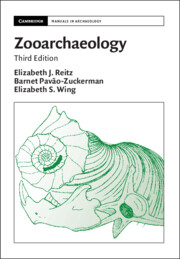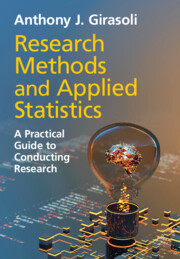Refine search
Actions for selected content:
37695 results in Cambridge Textbooks
List of Tables
-
- Book:
- Fundamentals of Analog Electronic Circuits
- Published online:
- 08 October 2025
- Print publication:
- 31 December 2025, pp xxix-xxx
-
- Chapter
- Export citation
Preface
-
-
- Book:
- Fundamentals of Analog Electronic Circuits
- Published online:
- 08 October 2025
- Print publication:
- 31 December 2025, pp xxxi-xxxiv
-
- Chapter
- Export citation
Appendix B
-
- Book:
- Fundamentals of Analog Electronic Circuits
- Published online:
- 08 October 2025
- Print publication:
- 31 December 2025, pp 591-610
-
- Chapter
- Export citation
2 - Transistor Amplifiers
-
- Book:
- Fundamentals of Analog Electronic Circuits
- Published online:
- 08 October 2025
- Print publication:
- 31 December 2025, pp 63-122
-
- Chapter
- Export citation
2 - The Climate Question and Sustainable Development
-
- Book:
- Green Energy and Sustainable Development
- Published online:
- 30 November 2025
- Print publication:
- 31 December 2025, pp 11-36
-
- Chapter
- Export citation
3 - Energy and Sustainable Development Goals
-
- Book:
- Green Energy and Sustainable Development
- Published online:
- 30 November 2025
- Print publication:
- 31 December 2025, pp 37-54
-
- Chapter
- Export citation
Index
-
- Book:
- Fundamentals of Analog Electronic Circuits
- Published online:
- 08 October 2025
- Print publication:
- 31 December 2025, pp 611-621
-
- Chapter
- Export citation
8 - Developing Sustainable Organizations: A Case Study
-
- Book:
- Green Energy and Sustainable Development
- Published online:
- 30 November 2025
- Print publication:
- 31 December 2025, pp 183-200
-
- Chapter
- Export citation
5 - Solar Energy: Green and Renewable Source of Energy
-
- Book:
- Green Energy and Sustainable Development
- Published online:
- 30 November 2025
- Print publication:
- 31 December 2025, pp 83-122
-
- Chapter
- Export citation
7 - Current Mirrors and Differential Amplifiers
-
- Book:
- Fundamentals of Analog Electronic Circuits
- Published online:
- 08 October 2025
- Print publication:
- 31 December 2025, pp 323-390
-
- Chapter
- Export citation

The English Language
- A Historical Introduction
- Coming soon
-
- Expected online publication date:
- December 2025
- Print publication:
- 08 January 2026
-
- Textbook
- Export citation

A Hands-On Introduction to Data Science with Python
- Coming soon
-
- Expected online publication date:
- December 2025
- Print publication:
- 22 January 2026
-
- Textbook
- Export citation

Historical Sociolinguistics
- Coming soon
-
- Expected online publication date:
- December 2025
- Print publication:
- 08 January 2026
-
- Textbook
- Export citation

Introduction to Machine Learning
- From Math to Code
- Coming soon
-
- Expected online publication date:
- December 2025
- Print publication:
- 18 December 2025
-
- Textbook
- Export citation

Zooarchaeology
- Coming soon
-
- Expected online publication date:
- December 2025
- Print publication:
- 18 December 2025
-
- Textbook
- Export citation

Research Methods and Applied Statistics
- A Practical Guide to Conducting Research
- Coming soon
-
- Expected online publication date:
- December 2025
- Print publication:
- 02 October 2025
-
- Textbook
- Export citation

Financial Data Science
- Coming soon
-
- Expected online publication date:
- December 2025
- Print publication:
- 17 July 2025
-
- Textbook
- Export citation

Statistics for Chemical Engineers
- From Data to Models to Decisions
- Coming soon
-
- Expected online publication date:
- December 2025
- Print publication:
- 25 September 2025
-
- Textbook
- Export citation

Parallel Computer Organization and Design
- Coming soon
-
- Expected online publication date:
- December 2025
- Print publication:
- 09 October 2025
-
- Textbook
- Export citation

Child and Adolescent Development
- An Integrated Approach
- Coming soon
-
- Expected online publication date:
- December 2025
- Print publication:
- 04 December 2025
-
- Textbook
- Export citation
